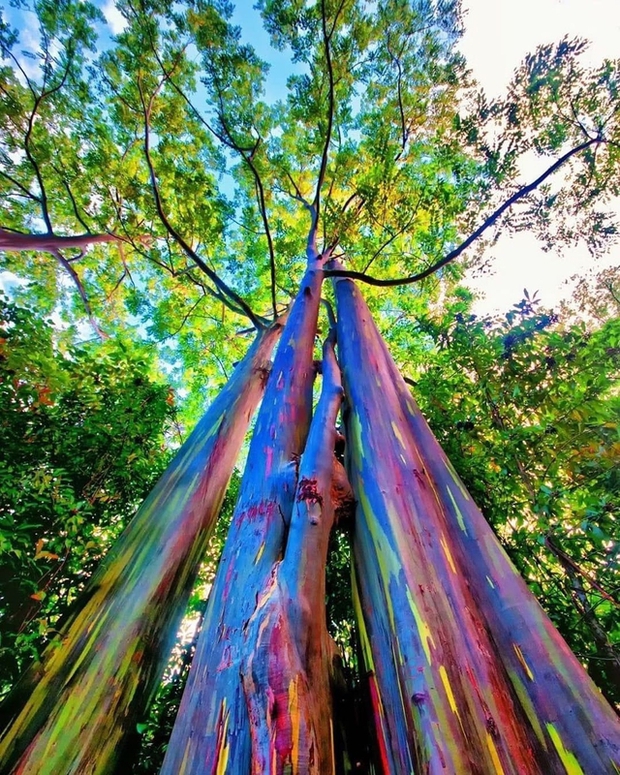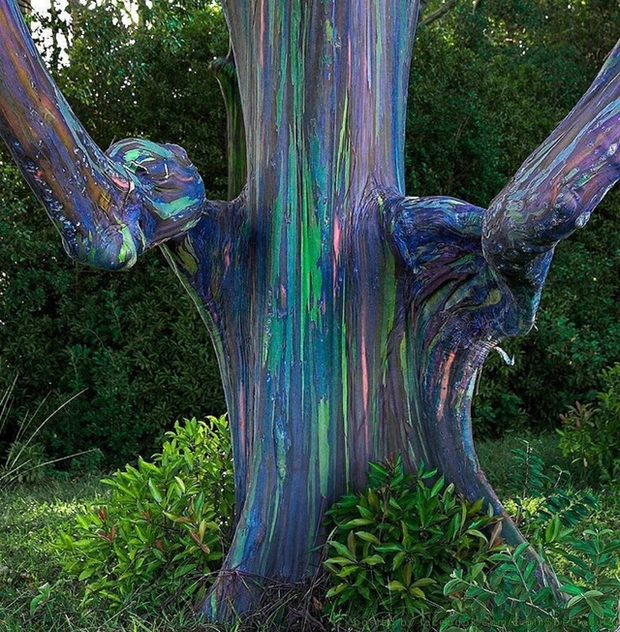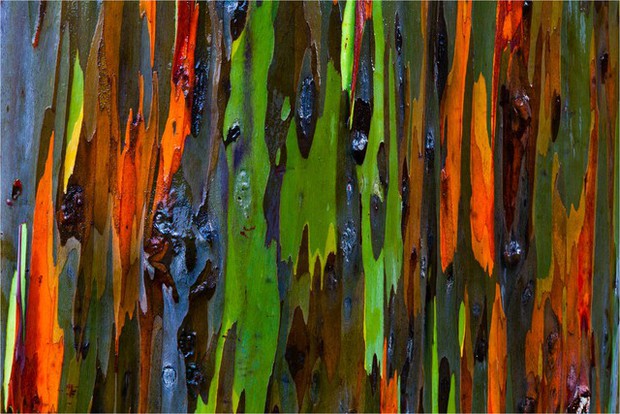Eucalyptus deglupta is often called rainbow eucalyptus because of its unique way of shedding its bark. Once the outermost layer of bark peels off, the stems will be exposed as bright green, but gradually, they will turn blue, purple, orange, and finally maroon. Rainbow eucalyptus does not shed its bark all at once, but partially throughout the year, creating a very eye-catching rainbow effect.
Also known as ‘Mindanao gum’ or ‘rainbow gum’, this beautiful tree is native to the Philippines, Indonesia and Papua New Guinea. It is the only species of eucalyptus that commonly inhabits rainforests – with its natural range extending into the northern hemisphere – and is one of only four species of eucalypts out of more than 700 that do not occur in Australia.
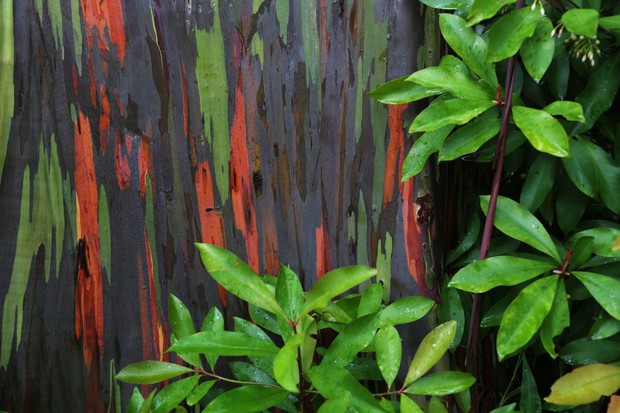
The brown outer shell peels off in long, narrow strips, revealing a bright green inner shell, which gradually changes color when exposed to air – turning blue and purple, then red, yellow and finally brown. In recent years, people have also used these colorful plants as a decoration, mainly for landscape design to add color to verdant settings in parks, homes or botanical gardens. .
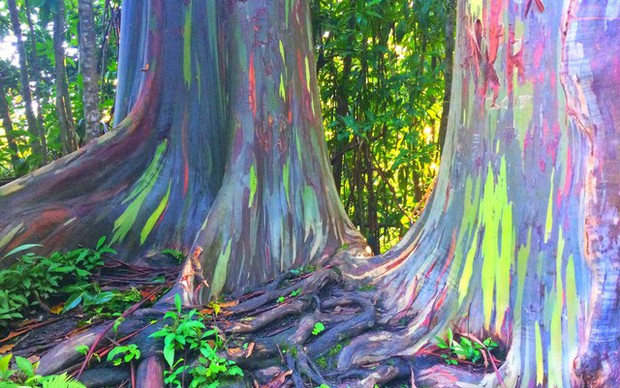
Eucalyptus deglupta is a fast-growing tree, typically reaching a height of 60–75 m with a trunk up to 240 cm in diameter. This tree is widely grown around the world in tree plantations, mainly for pulpwood used to make white paper. It is the dominant species used for pulpwood plantations in the Philippines. In the US, rainbow eucalyptus grows in frost-free climates in Hawaii and southern areas of California, Texas and Florida. However, in the continental United States, the tree only grows to a height of 100 to 125 feet (30-38 m).
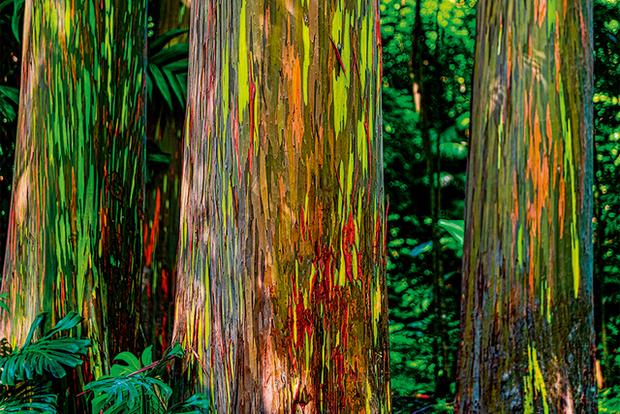
Typically, these trees grow 1 to 1.5 meters tall per year. The fastest growth was in the first decade. Depending on conditions, your rainbow eucalyptus can live from 50 to 150 years.
